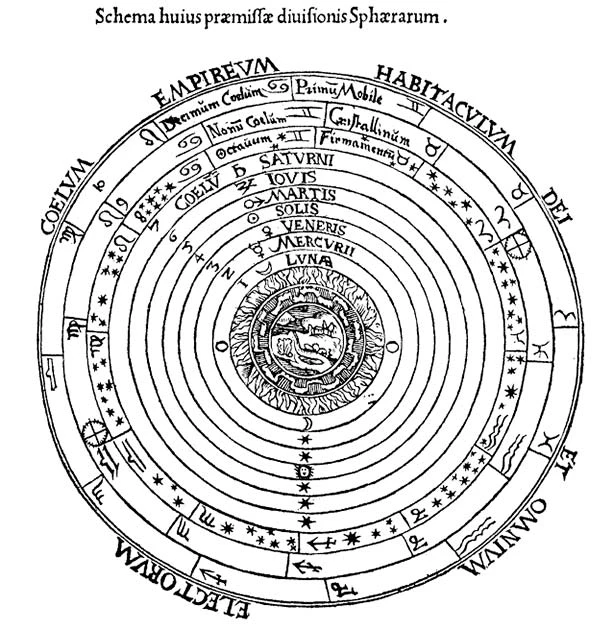What is “aether”? Well, that is simple: aether (also spelled as ether, aither, or æther) is the “material that fills the region of the universe of the terrestrial sphere” or at least it was according to ancient science.
Aether was also known as “The Fifth Element” or quintessence, and the concept of aether was used in multiple theories scientists postulated to explain natural phenomena such as gravity and light. The origins of aether can be traced back to ancient Greece.
According to Greek Mythology, aether was thought to be the “pure essence” that the gods breathed, which filled the space in the heavens where they lived. It was a heavenly form of air that was only created in the heavens, mortals breathe oxygen, and gods breathe aether.
The mythological personification of Aether is the son of Erebus, the personification of darkness, and Nyx, the personification of night.
The 5th Element
Plato described aether as being “the most translucent kind [of air] which is called by the name of aether” in his work Timaeus. While Plato does refer to the concept of aether when describing air, he was a firm believer in the classical system of four elements.
The classical system of four elements is something everyone is familiar with; it is the belief that the four elements that everything is composed of are Earth, Fire, Air, and Water. This would seemingly leave no space for aether, but this is only the beginning of the complications.
The next philosopher who wrote about aether, or the fifth element, was Aristotle, a student of Plato’s. In Aristotle’s book On the Heavens, he explains how the four classical elements were known to change.
- Legislative Hubris: How did Indiana get Pi Wrong?
- Pythagoras: Seven Strange Facts about the Philosopher
Aether, or as Aristotle called it, the first element was found in the heavens and celestial realm, was unlike the four elements. Aether was not dry or wet, and it was not hot or cold. Aether was unable to have “motion of quality or motion of quantity,” but it was able to move in a circular pattern.

In his book, Aristotle described how the heavens and celestial spheres were made of aether and contained the stars and planets. This belief that these aether spheres moved in a circular motion is what led Aristotle to explain why the natural orbit of stars and planets is in a circular form.
This is where the whole fifth element thing really started. It is worth noting however that Aristotle never called this fifth element aether.
Quintessence, Gravity and Light
During the medieval ages, alchemists called this fifth element Quintessence. Quintessence was believed to be nearly identical to what the heavenly bodies were composed of, just like aether as described by the ancient Greeks.
Alchemists reported that there was hardly any quintessence that could be found in the terrestrial sphere, which makes sense because quintessence or aether was a heavenly element. Due to the scarce levels of aether on Earth, the planet could be impacted by what was occurring within the heavenly bodies.
Quintessence became incredibly popular amongst medicinal alchemists across Europe. Medicinal alchemists tried to separate and isolate this aether in an attempt to add it to medicine, tonics, and elixirs.
Because quintessence was “pure and of heavenly quality,” it was believed that if a mortal were to consume some of this pure element, it could cure them of any injuries or illnesses. Ancient alchemists would attempt to gather aether by distilling alcohol multiple times before adding the distilled alcohol to the medications prescribed to the ill.
As physics began to develop further in the 18th century, models called “aether theories” were developed in an effort to explain the existence of gravitational and electromagnetic forces. The aether in physics was very different from the idea of aether as proposed by the ancient Greeks.
- The Perpetual Motion Machine: Did Charles Redheffer Defy Physics?
- The Hole in Pascal’s Wager: A Flawed Thought Experiment?
It was not a celestial or heavenly element; it was an element required for gravity or the motion of light to exist. Aether was seen as the medium through which light waves traveled through space. This concept was called luminiferous ether, and until 1887, it was the prominent explanation for how light could travel through a vacuum.

Between April and July 1887, American physicists Albert Michelson and Edward Morley performed experiments to measure the relative motion of the Earth and luminiferous aether. The experiment the men performed “compared the speed of light in perpendicular directions in an attempt to detect the relative motion of matter through the luminiferous aether.”
The result of the Michelson-Morley Experiment was negative. The scientists were not able to detect/find/record any significant difference between “the speed of light in the direction of movement through the presumed aether, and the speed at right angles.”
The result of the Michelson-Morley Experiment is seen as the first example of evidence against aether theories in physics. Also, this experiment led to research that resulted in the concept of special relativity created by Albert Einstein.
Special Relativity, also known as the special theory of relativity, is the scientific theory about the relationship between both space and time. Einstein’s theory of special relativity was based on two main ideas:
One: the laws of physics are identical in all frames of reference, with no acceleration.
Two: the speed of light in a vacuum is the same for all observers, regardless of the motion of a light source or the observer.
The theory of relativity was developed because Einstein wanted to understand why the current equations of electromagnetism were in direct opposition to Newtonian mechanics, and the null result of the Michelson-Morley Experiment failed to detect the motion of the Earth against luminiferous aether. Today, Einstein’s theory of special relativity has been proven to be the most accurate model of motion when both quantum and gravitational effects are negligible or insignificant.
These two ideas Einstein postulated in this theory led to one of his most well-known equations, E = mc², which calculates the speed of light in a vacuum. The Michelson-Morley experiment and further developments by other physicists and Einstein officially disproved the concept of luminiferous aether, and it is no longer considered an actual element or force that affects light or gravity.
Top Image: Aether was believed to surround the heavenly bodies, and to move them as it swirled invisibly. Source: ZDF; Terra X; T. Schultes; Aleks & Shantu / CC BY 4.0.